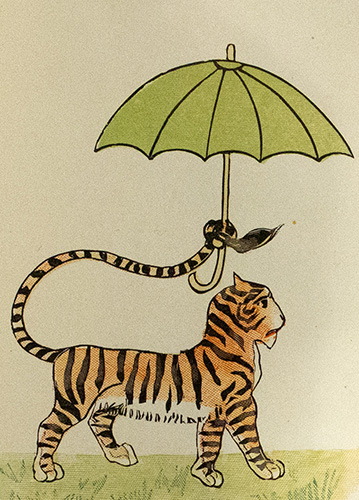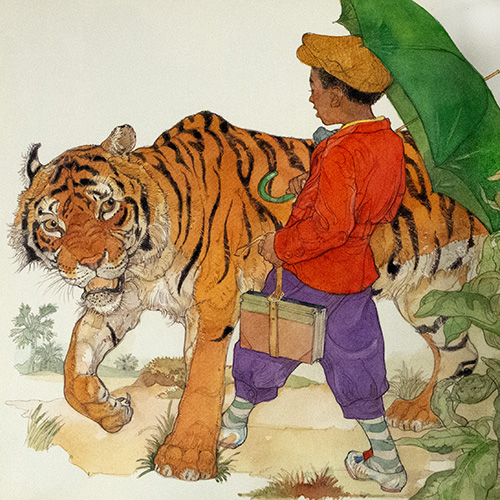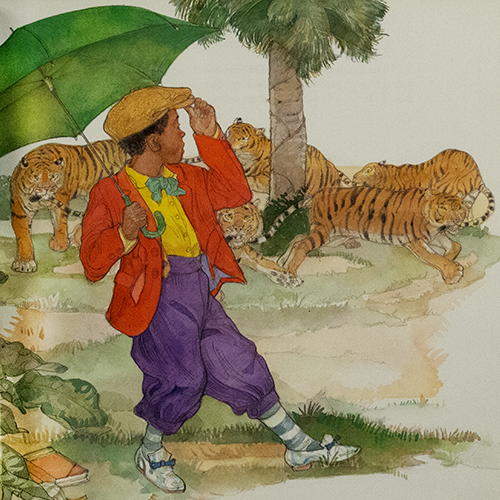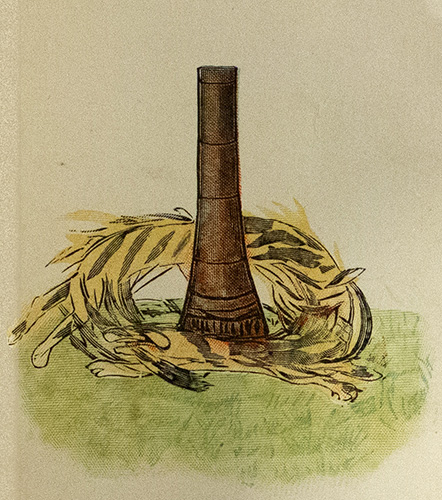Little Black Sambo Collection

The Story of Little Black Sambo by Helen Bannerman has been a source of controversy since it was published in England in 1899 and became exceptionally popular in the United States. Bannerman, while traveling in India, wrote the story for her daughters, never expecting the level of fame––and infamy––the book would garner.
While the story itself is a joyful tale of a young boy outsmarting a pack of vicious tigers, “Sambo” and other names in the book are pejorative terms often used during the Jim Crow era to describe people of African descent. Additionally, Bannerman’s original illustrations and the vast majority of following adaptations portray harmful racist stereotypes. Much of the discussion surrounding this controversial work revolves around whether early editions of this book, now having been adapted with dignity and respect by modern authors, still hold value or should be set aside to make room for reparative versions.
Acquired in 2007, The Little Black Sambo Collection contains almost 200 books, with a variety of illustration styles and visual interpretations of the text, as well as editions translated into Dutch, French, Japanese, and other languages. The collection also includes toys, jewelry, dolls, and other ephemera, many of which contain racial stereotypes, inspired by and created in tandem with the story spanning over a century.
The collection seeks to preserve the story’s history as a research and teaching resource. The Little Black Sambo Collection exists in conversation with a myriad of other children’s stories, notably those in the Henrietta Hochschild Collection of Children’s Books, each with their own complex histories. In the words of Helen and Marc Younger, who first assembled the collection, “by looking at the various ways that Sambo was portrayed, one can get some idea of prevailing societal values and track the changes.” In preserving these works spanning a century, the Little Black Sambo Collection offers a glimpse into how history, societal norms, and cultural progress interact with the constant evolution of illustration and storytelling.
Harmful Language Statement
The Julian Edison Department of Special Collections aims to describe materials in a manner that is respectful to individuals and communities. Within this collection, users will encounter offensive or harmful language, images, and objects referencing race, gender, sexuality, and/or religion; these descriptions reflect the language and concepts used by the people and organizations that created the material. The language that comes from the original creator can provide historical context about the people who created it.
Please see the Special Collections Research & Access page for more information on the Julian Edison Department of Special Collections’ Statement on Harmful Language in Archival Descriptions & Cataloging.
Access these Materials
Search the Little Black Sambo Collection on the Library Catalog
Contact
- Department
- Special Collections, Special Collections, Preservation, and Digital Strategies
- Name
- Cassie Brand
- she/her
- Job Title
- Curator of Rare Books
- Email Address
- cassie.brand@wustl.edu
- Phone Number
- (314) 935-4950




